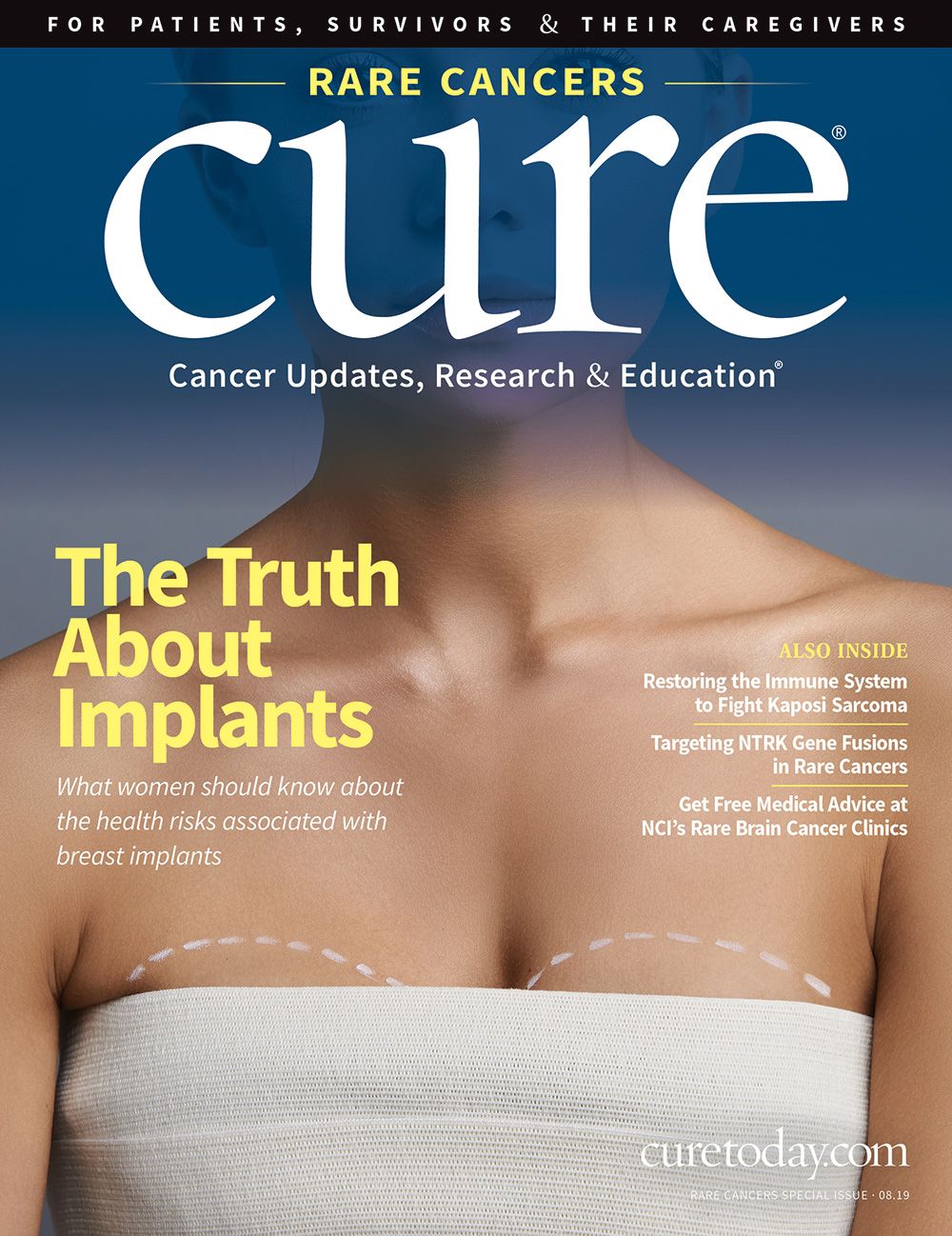Patients Need Facts About Rare Cancers, Like Lymphoma Associated With Breast Implants
Knowledge is essential for any patient facing cancer, and this issue provides the facts not only about breast implant-associated anaplastic large cell lymphoma but also other rare cancer types or mutations.
After her bilateral mastectomy due to ductal carcinoma in situ, Renee Ridgeley wanted breast reconstruction.
She investigated various techniques and chose textured breast implants because she thought they’d look the most natural. At no time did a doctor tell her that these were associated with a risk of a rare new blood cancer or that autoimmune symptoms could arise in people with either textured or smooth implants.
That was in 2016, five years after the Food and Drug Administration (FDA) website outlined the risks associated with implants.
When Ridgeley later learned about those side effects, “I was angry,” she told CURE ® in a recent podcast. “It would have been as simple as (the surgeon) saying ‘With the textured, there’s a rare link to lymphoma, and with the smooth, we can make them look good.’ It would have been a no-brainer,” she said. “It was a turning point for me (in) becoming an advocate and wanting to raise awareness, (because) if the medical community is unwilling to tell patients about this risk, there needs to be peer-to-peer information.”
Ridgeley is one of many who, in a recent public hearing, asked the FDA to require surgeons to share risk information with women considering breast implants. Our coverage of that hearing, which contains important information for breast cancer survivors who have undergone or are considering reconstruction, appears in this special issue on rare cancers.
Knowledge is essential for any patient facing cancer, and this issue provides the facts not only about breast implant-associated anaplastic large cell lymphoma but also other rare cancer types or mutations. It also offers information for people with any kind of rare cancer.
Our feature on Kaposi sarcoma explains the origins and treatments of this cancer, which often affects the skin and appears in people with HIV and in older men. In another feature, we discuss treatments for Sertoli-Leydig tumors, hormone-producing ovarian cancers with symptoms that include development of male characteristics such as facial hair and a deeper voice. Our coverage of a conference on Waldenstrom macroglobulinemia gives insights into the research driving progress in treating this blood cancer.
In topics that span cancer types, we offer a feature on NTRK fusions, a gene alteration that appears in both rare and more preva- lent oncologic diseases, all of which can now be treated with a single targeted drug that was approved for any cancer bearing this mutation. We also bring you information about free rare cancer clinics being held by the National Cancer Institute.
We hope this array of material leaves you feeling informed about the treatment landscape across the spectrum of rare cancers and hopeful about the benefits of advances in research and patient sup- port. As always, thank you for reading.

FDA, Cancer Vaccine Updates and a Misguiding of Breast Cancer Treatment
February 5th 2024One cancer vaccine may still be years away from being available, a breast cancer test may be misguiding treatments for Black women and the review of two oncology regimens are being expedited by the FDA.
Listen